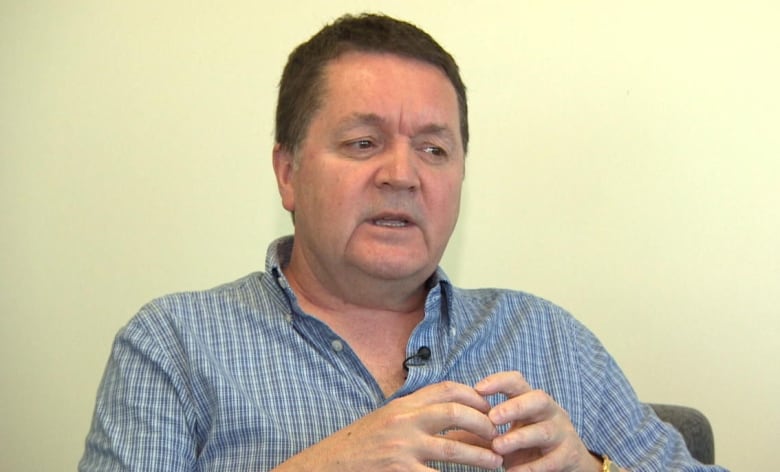From exile to inclusion: Special education makes big strides, but problems persist
A look at the history of inclusive education in Newfoundland and Labrador

Sixty years ago, a child with special needs would have never seen the inside of a classroom.
Fifty years ago, his or her acceptance was at the discretion of a school board — an administrative body holding the power to bar a child from learning because it was simply too much of an inconvenience.
It wasn't until 1979 that provincial legislation was amended to say a school "shall" accept a student with special needs, rather than the discretionary "may."
With a change in legislation and a shift in attitudes towards special needs children, the line between regular and special needs classrooms slowly began to blur.
That blurred line has since disappeared in many classrooms in Newfoundland and Labrador, where inclusive education sees children of various needs placed together in the same learning environment.
During CBC's Inside the Classroom education forum, teachers from across the province expressed frustration and utter dismay at how the inclusion model has been implemented.
Teachers say they do not have the proper resources at their disposal to handle students with a vast range of special needs, from learning disabilities, to mental illnesses and behavioural disorders.
So, why not?
Money talks, teachers walk
Complaints of being understaffed are nothing new.
In a critical analysis of Newfoundland and Labrador's special education system in 2000, Alan Edmunds reported that teachers were upset at a lack of resources and a larger workload. They believed inclusion was a cost-saving measure by the province, rather than a well-intentioned initiative.
Sixteen years later, a provincial budget — which took no prisoners in any part of the province — bucked the overall trend of growth in education spending across Canada in the last decade.

In total, $50.9 million was cut from the education and early childhood development budget for this school year — the largest cut from any government department — and 142 jobs were allocated for the rollout of full-day kindergarten.
This move stripped resources from regular classrooms and moved them to the kindergarten program. That left many teachers without instructional resource teachers to assist them in their inclusive classrooms.
Growing pains
Special education evolved into inclusion in the decades since the integration of special needs kids into regular schools. Models have come and gone, and the definition of inclusion has seen changes.
By the 1990s, students with exceptionalities started their education in the regular classroom and were placed in separate classrooms if a special need was identified.

Teachers would then work with the student and his or her parents to tailor a unique strategy for the student's learning — known as an individual support services plan (ISSP).
The method was met with criticism from teachers and experts, including David Philpott, a professor at Memorial University and a current member of the premier's task force on education.
Policy and practice must change if the needs of students are to remain central to the focus of education.- David Philpott, Memorial University professor
By 2007, Philpott and a commission of educators had called down the model, saying it was no longer feasible.
"The commission is concerned that too many students are receiving ineffective programs," he wrote.
"Policy and practice must change if the needs of students are to remain central to the focus of education. That change has to begin now."
A change in philosophy
The idea of inclusion has since moved away from focusing on each individual as problems arise, and instead targets a broader way to reach everybody from the start.
"We are moving towards an idea of universal design for learning," said Gabrielle Young, a special education professor at Memorial University. "[That] means you have to get to know your students from the very beginning, get to know who they are, and plan accordingly."
The idea was adapted from architecture — make a building accessible from the beginning, rather than tacking on additions like wheelchair ramps and elevators as the needs arise.
An initiative began in 2009 to bring schools into the new inclusion model. They were placed in one of eight groups, with a new group being trained into the model each year.
Having an extra teacher being plopped into a classroom every third day ... can actually be more destructive.- Gabrielle Young, Memorial University professor
The new system still allows for children to be moved away from the regular classroom and requires plenty of planning and creativity, Young said.
It also requires the dedication of instructional resource teachers on more than a part-time basis.
"It cannot be placed solely on the classroom teacher," Young said.
"Having an extra teacher being plopped into a classroom every third day … can actually be more destructive."
It's not easy, but they'll keep trying
The evolution of special education has seen students move from the basement to the classroom — an undeniable victory for equality and human rights.
While the teachers featured on Inside the Classroom agreed wholeheartedly with the intention, they do not see inclusion as a realistic method under the current conditions of the province's education system.
Inconsistent implementation, ambiguous philosophies and government budget cuts have affected the progress of inclusive education in Newfoundland and Labrador.
The result, teachers say, is a lack of dedicated resources and a mess of stress.

Craig Tucker, a junior high and high school teacher in central Newfoundland, showed the frustration in his voice as he summed up his feelings on the topic.
"When you have a large class with a lot of exceptionalities, you are spread very, very thin," he said.
He was then asked how his colleagues cope with the realities they are facing.
"You do your best," he replied.
"Our system is run by teachers who are constantly under pressure, but who are always making it work. But I wonder how long that's going to continue."

